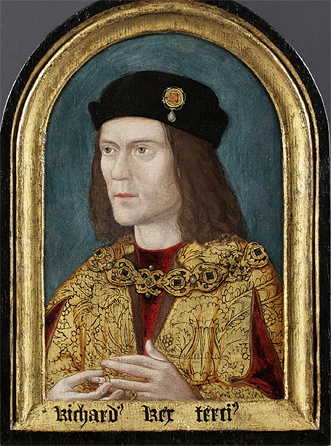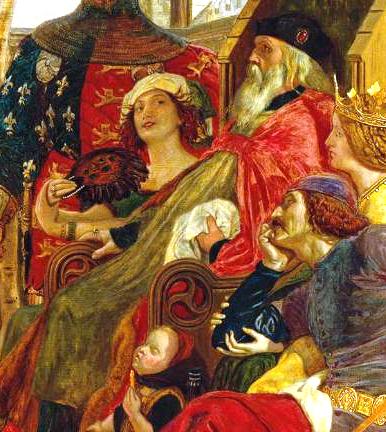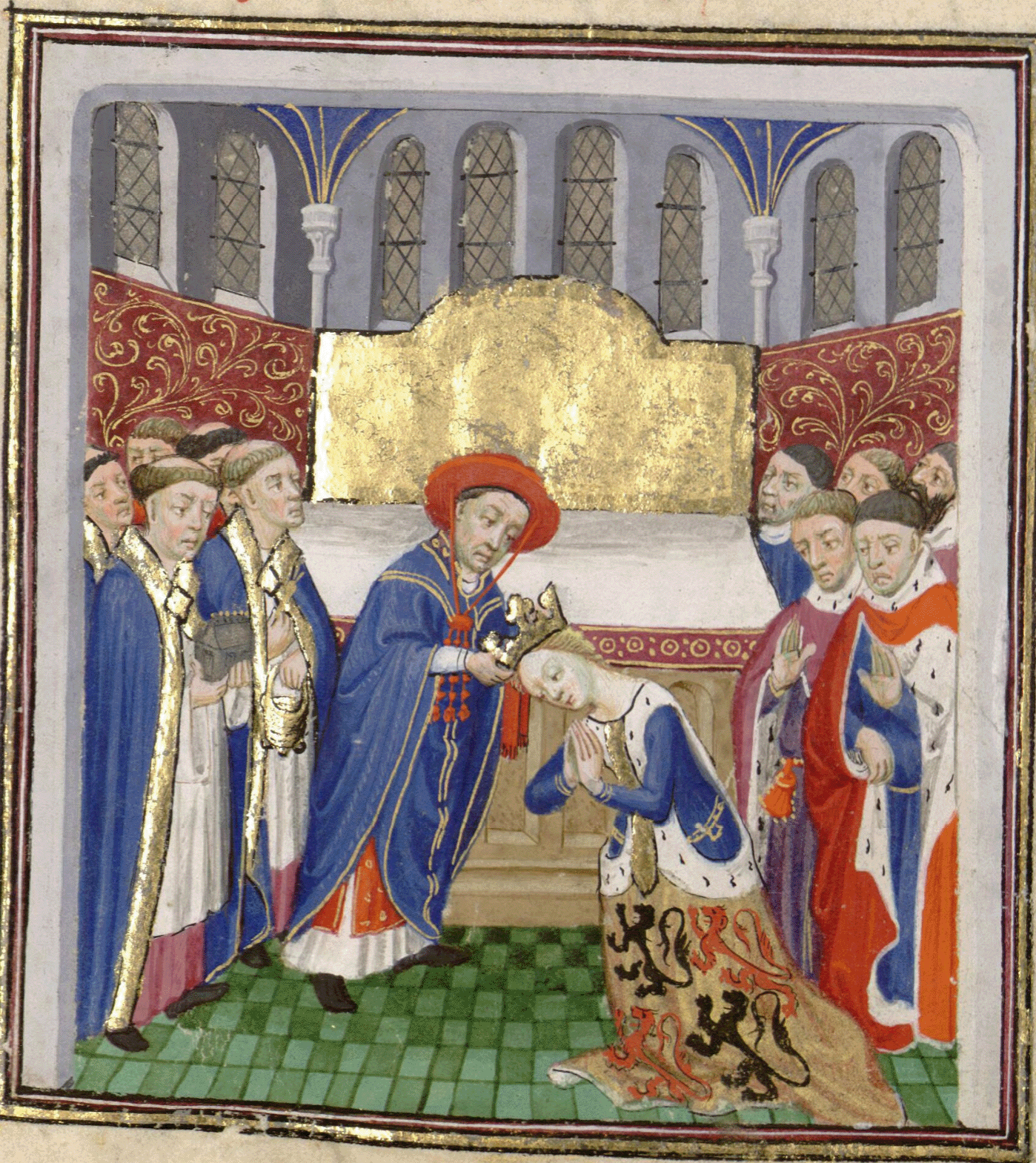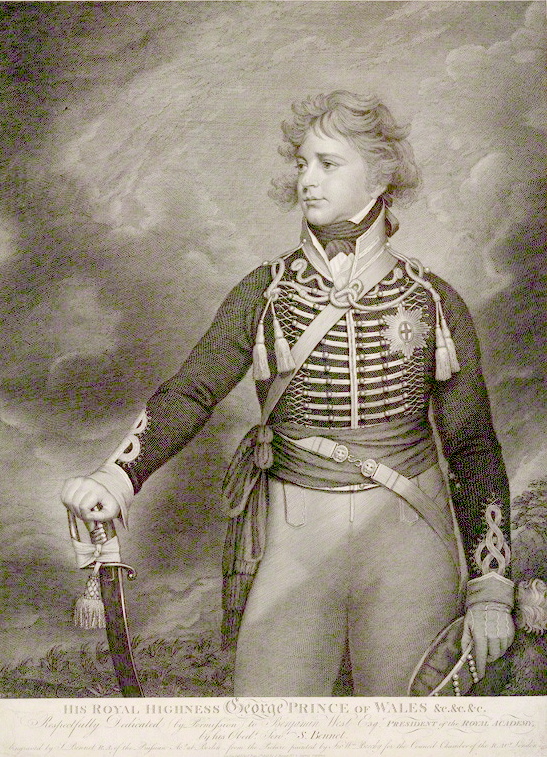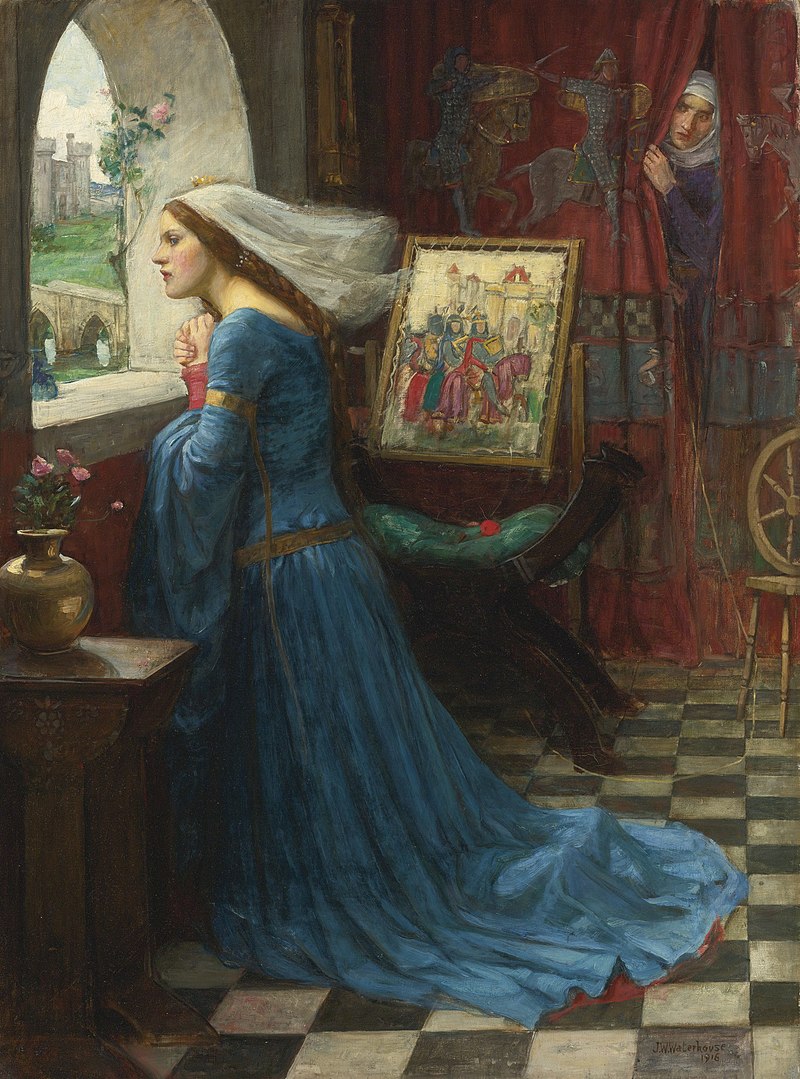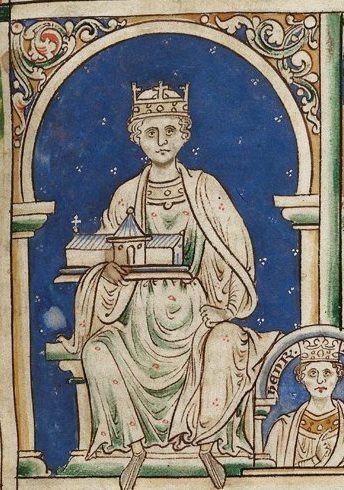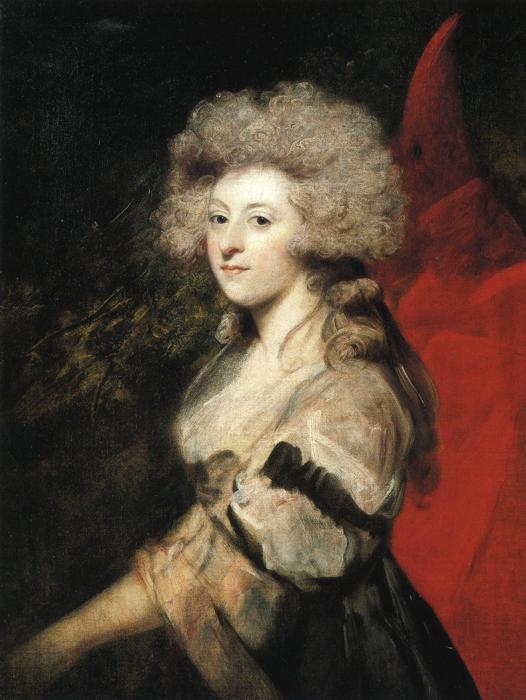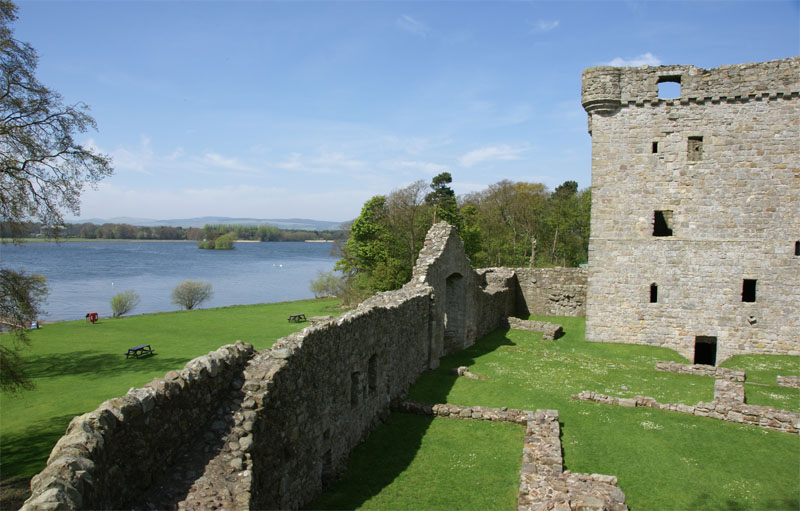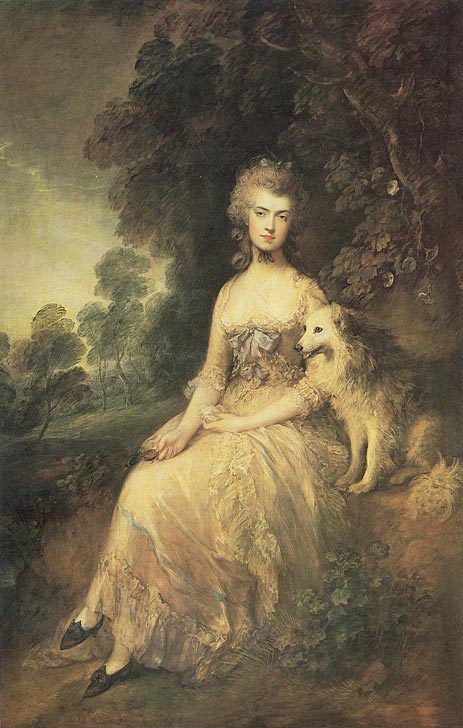by Susan Flantzer
© Unofficial Royalty 2020

Possible portrait of Elizabeth Blount; Credit – https://conorbyrnex.wordpress.com/2013/01/22/a-portrait-of-bessie-blount-c-1500-1539/
The only mistress of King Henry VIII of England who had a child acknowledged by him, Elizabeth Blount, also known as Bessie Blount, was born circa 1498 at Kinlet Hall in Kinlet, Shropshire, England. She was one of the eight children of Sir John Blount of Kinlet Hall (circa 1471 – 1531) and his wife Katherine Peshall. Elizabeth’s siblings were George, William, Henry, Anne, Rose, Isabel, and Albora but their birth order is unknown. Little is known about Elizabeth’s childhood but she was probably educated by her mother and other female members of the household.

Effigies of Elizabeth’s parents on their tomb at St John the Baptist Church in Kinlet, Shropshire, England; Credit – By Mike Searle, CC BY-SA 2.0, https://commons.wikimedia.org/w/index.php?curid=80988191
Elizabeth’s family had close connections with the Tudor family. Elizabeth’s maternal grandfather fought on the side of Henry Tudor (the future King Henry VII and the father of Henry VIII) at the Battle of Bosworth Field where King Richard III of the House of York was defeated and killed. Elizabeth’s great-grandfather Sir Richard Croft was the steward of the household of Arthur, Prince of Wales, eldest son of King Henry VII, at Ludlow Castle, and one of Arthur’s most important advisors. Elizabeth’s uncle, Sir Humphrey Blount, was a Knight of the Body (personal attendant) to King Henry VIII. Elizabeth’s father was one of Henry VIII’s King’s Spears at the time of his coronation. The King’s Spears were fifty men of noble birth who served as mounted bodyguards for King Henry VIII. It is most likely through her father’s influence that Elizabeth found a place at court.

Henry VIII, circa 1520; Credit – Wikipedia
In 1513, Elizabeth, around 15-years-old, came to Henry VIII’s court as a maid-of-honor to his first wife Catherine of Aragon and she quickly became one of the court’s beauties. She could sing and dance well and became a favorite of Henry VIII’s courtiers. In October 1514, she was mentioned in a letter to Henry VIII from his good friend and brother-in-law Charles Brandon, 1st Duke of Suffolk. The letter infers that Henry and Brandon were partners in “flirtations” with Elizabeth and so it is probable that she became Henry’s mistress in 1514 or 1515. Their affair lasted for about five years.
On June 15, 1519, Elizabeth gave birth to Henry VIII’s child, a son named Henry Fitzroy, with FitzRoy, a Norman-French surname meaning “son of the king”. FitzRoy had been conceived when Catherine of Aragon was approaching what would be her last confinement and resulted in a stillborn daughter in November 1518. To avoid scandal, Elizabeth was taken to the Augustinian Priory of St. Lawrence in Blackmore, Essex, England for her confinement.
Fitzroy’s birth came at a crucial time in his father’s marriage to Catherine of Aragon as a few months before Catherine had given birth to the last of her six children, a stillborn daughter. The future Mary I, Queen of England, born in 1516, was the only surviving child of Henry VIII and Catherine of Aragon. Fitzroy’s birth proved to Henry that he could father a healthy male child and convinced him that Catherine was at fault for the lack of male heirs. There was talk in the early 1530s that Henry VIII, who then had no male heir, would legitimize Fitzroy so he could succeed his father.
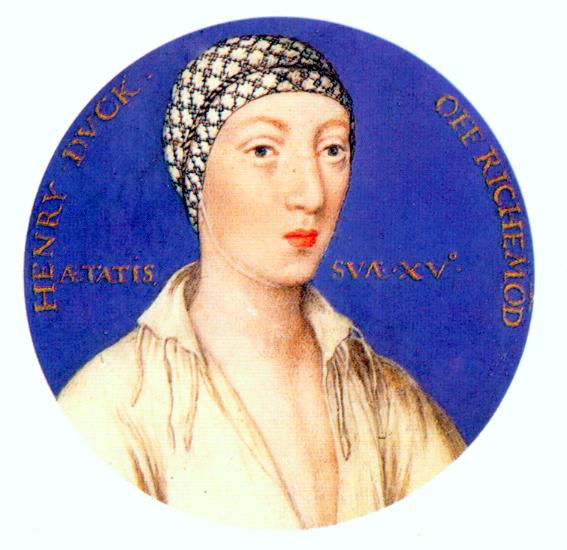
A miniature of Elizabeth and Henry VIII’s son, Henry Fitzroy, at the age of 15; Credit – Wikipedia
Fitzroy is thought to have been cared for in the royal nursery with his half-sister Mary. He was given his own London residence in 1525, the same year he was created the Duke of Richmond and Somerset. Fitzroy was also given numerous titles such as Lord High Admiral of England, Lord Lieutenant of Ireland, and Lord President of the Council.
Henry VIII likely asked Cardinal Thomas Wolsey to arrange a marriage for Elizabeth, and sometime before June 1522, Elizabeth married Gilbert Tailboys. Elizabeth’s second child, a daughter named Elizabeth, had been born sometime between July 1519 and June 1520, before she married Gilbert. This child’s father possibly was Henry VIII. However, Gilbert Tailboys recognized little Elizabeth as his child, and therefore, biological or not, she was considered to be Gilbert’s by the law.
After Gilbert’s marriage to Elizabeth, his financial situation dramatically changed. Gilbert was given grants of land in Lincolnshire, Warwickshire, and Yorkshire. Over the next several years, he was a gentleman of the king’s bedchamber, High Sheriff of Lincolnshire, a member of Parliament for Lincolnshire, and was created 1st Baron Tailboys of Kyme. Elizabeth’s marriage to Gilbert lasted until April 15, 1530, when he died, aged 33. All of Gilbert’s children succeeded to his title but as none of them had any children, the title became extinct upon the death of his daughter Elizabeth.
Elizabeth and Gilbert had one daughter and two sons:
- Elizabeth Tailboys, 4th Baroness Tailboys of Kyme (circa 1520 – 1563), married (1) Thomas Wymbish of Nocton, no children (2) Ambrose Dudley, 3rd Earl of Warwick, no children
- George Tailboys, 2nd Baron Tailboys of Kyme (1523 – 1539), married Margaret Skipwith, no children
- Robert Tailboys, 3rd Baron Tailboys of Kyme (1528 – 1542), unmarried

Elizabeth’s second husband Edward Clinton, 9th Baron Clinton; Credit – Wikipedia
Shortly after her first husband’s death, Elizabeth married Edward Clinton, 9th Baron Clinton, who was fourteen years younger than Elizabeth and owned land that adjoined Elizabeth’s land. Edward was in the service of Henry VIII and his three children during their reigns and was created 1st Earl of Lincoln in 1572.
Elizabeth and Edward had three daughters:
- Lady Bridget Clinton (circa 1536 – ?), married Robert Dymoke of Scrivelsby, Lincolnshire, had ten children
- Lady Katherine Clinton (circa 1538 – 1621), married William Burgh, 2nd Baron Burgh of Gainsborough, had two children
- Lady Margaret Clinton (circa 1539 – ?), married Charles Willoughby, 2nd Baron Willoughby of Parham, had five children.
In 1533, Elizabeth’s son Henry Fitzroy married Lady Mary Howard, a daughter of Thomas Howard, 3rd Duke of Norfolk, the uncle of Anne Boleyn and Catherine Howard, two of Henry VIII’s wives. Henry VIII’s second wife Anne Boleyn arranged the marriage. Fitzroy died on July 23, 1536, at the age of seventeen, likely of tuberculosis. He was buried at St. Michael the Archangel Church in Framlingham, Suffolk, England, the burial site of the Howard family.
Elizabeth outlived her eldest son by three or four years. Very little is known of her life after the death of her son but it appears that Elizabeth died in childbirth, or shortly after giving birth, sometime between February 6, 1539 and January 2, 1540, at the age of only forty or forty-one. Her burial site burial is unknown.
This article is the intellectual property of Unofficial Royalty and is NOT TO BE COPIED, EDITED, OR POSTED IN ANY FORM ON ANOTHER WEBSITE under any circumstances. It is permissible to use a link that directs to Unofficial Royalty.
Works Cited
- Bryson, Sarah, 2016. Elizabeth (Bessie) Blount By Sarah Bryson – The Tudor Society. [online] The Tudor Society. Available at: <https://www.tudorsociety.com/elizabeth-bessie-blount-by-sarah-bryson/> [Accessed 31 July 2020].
- En.wikipedia.org. 2020. Elizabeth Blount. [online] Available at: <https://en.wikipedia.org/wiki/Elizabeth_Blount> [Accessed 31 July 2020].
- En.wikipedia.org. 2020. Henry Fitzroy, Duke Of Richmond And Somerset. [online] Available at: <http://en.wikipedia.org/wiki/Henry_FitzRoy,_1st_Duke_of_Richmond_and_Somerset> [Accessed 31 July 2020].
- Erickson, Carolly, 2004. Great Harry. London: Robson.
- McMahon, Emily, 2013. Henry Fitzroy, Duke Of Richmond And Somerset. [online] Unofficial Royalty. Available at: <https://www.unofficialroyalty.com/june-15-daily-featured-royal-date/> [Accessed 31 July 2020].
- Weir, Alison, 2001. Henry VIII – The King And His Court. New York: Ballantine Books.
- Weir, Alison, 2012. The Six Wives Of Henry VIII. [United States]: Paw Prints.






